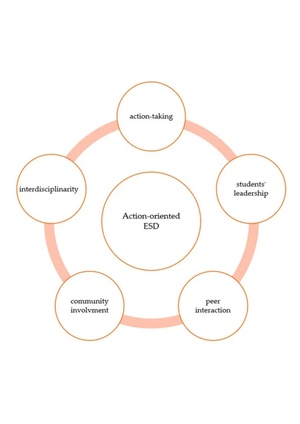Background information: Unterschied zwischen den Versionen
| Zeile 29: | Zeile 29: | ||
IMP>ACT applies a participatory design approach to its research and development activities, including relevant knowledge actors and users by means of co-design, co-creation and co-assessment. Through participatory design research, we aim to engage these stakeholders in the design process of the IMP>ACT assessment framework, to ensure that the framework is effective, relevant, and inclusive of their contexts and needs. Our approach to participatory design research involves identifying and recruiting stakeholders, co-designing research questions, collecting, analysing, and interpreting data, knowledge dissemination, and enacting change. | IMP>ACT applies a participatory design approach to its research and development activities, including relevant knowledge actors and users by means of co-design, co-creation and co-assessment. Through participatory design research, we aim to engage these stakeholders in the design process of the IMP>ACT assessment framework, to ensure that the framework is effective, relevant, and inclusive of their contexts and needs. Our approach to participatory design research involves identifying and recruiting stakeholders, co-designing research questions, collecting, analysing, and interpreting data, knowledge dissemination, and enacting change. | ||
| − | [[Kategorie:Projekt]] | + | [[Kategorie:Projekt]][[Kategorie:IMPACT]] |
Version vom 10. April 2024, 13:24 Uhr
Objectives
At the core of the IMP>ACT assessment framework are the concepts of action competence (key observable learning outcome of SCCE) and action-orientation (key qualities of teaching, driving learning in SCCE). IMP>ACT will design and validate the framework in a user-centred, iterative approach through small-scale interventions, followed by six large-scale case studies,selected to cover the lifelong learning scope of SCCE. IMP>ACT brings together an interdisciplinary consortium with partners from SCCE research, policy and practice.
Action Competence
- "Commitment, willingness and ability to take action"
- "All actions are behaviors, but not all behaviors are actions"
Action:
- Decided upon by those who act
- Comes from a commitment to/ connection with a controversial issue
- Deliberated and intended as a contribution to solving that issue
(Sinakou et al., 2019, Van Poeck et al., 2023)
More readings on action competence
- Sinakou, Donche, Boeve-de Pauw, & Van Petegem. (2019). Designing Powerful Learning Environments in Education for Sustainable Development: A Conceptual Framework. Sustainability, 11(21), 5994. https://doi.org/10.3390/su11215994
- Sass, W., De Maeyer, S., Boeve-de Pauw, J., & Van Petegem, P. (2024). Effectiveness of education for sustainability: The importance of an action-oriented approach. Environmental Education Research, 30(4), 479–498. https://doi.org/10.1080/13504622.2023.2229543
- Sass, W., Boeve-de Pauw, J., Olsson, D., Gericke, N., De Maeyer, S., & Van Petegem, P. (2020). Redefining action competence: The case of sustainable development. The Journal of Environmental Education, 51(4), 292–305. https://doi.org/10.1080/00958964.2020.1765132
- Schönstein, R. F., & Budke, A. (2024). Teaching action competence in education for sustainable development – a qualitative study on teachers’ ideas, opinions, attitudes and self-conceptions. Frontiers in Education, 8, 1256849. https://doi.org/10.3389/feduc.2023.1256849
- European Commission. Joint Research Centre. (2020). Sustainability competences: A systematic literature review. Publications Office. https://data.europa.eu/doi/10.2760/200956
Methodology
IMP>ACT applies a participatory design approach to its research and development activities, including relevant knowledge actors and users by means of co-design, co-creation and co-assessment. Through participatory design research, we aim to engage these stakeholders in the design process of the IMP>ACT assessment framework, to ensure that the framework is effective, relevant, and inclusive of their contexts and needs. Our approach to participatory design research involves identifying and recruiting stakeholders, co-designing research questions, collecting, analysing, and interpreting data, knowledge dissemination, and enacting change.
